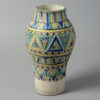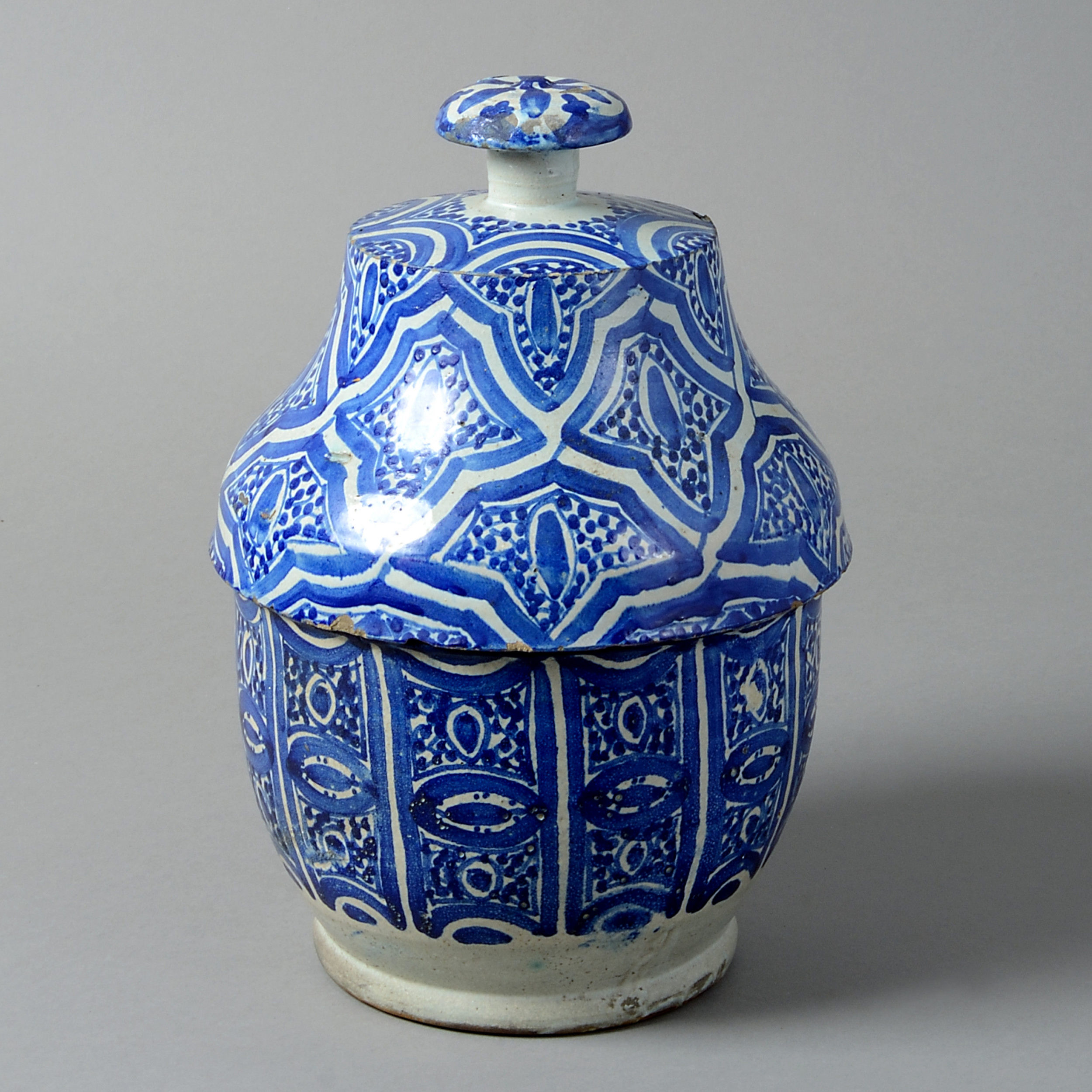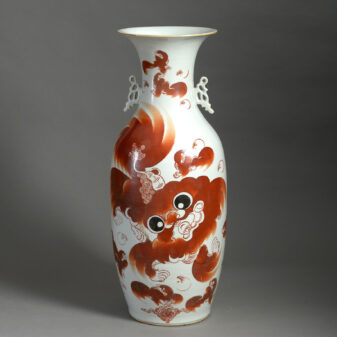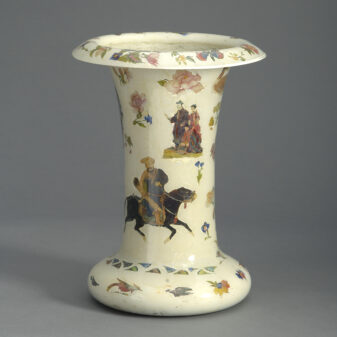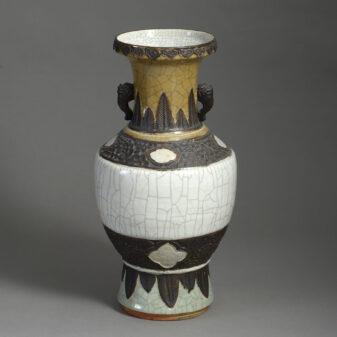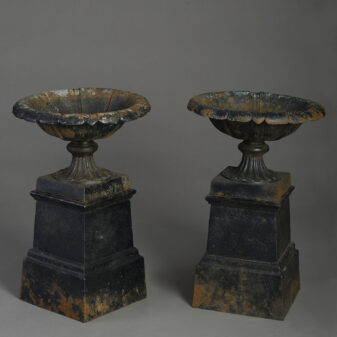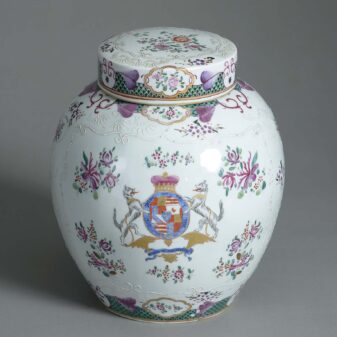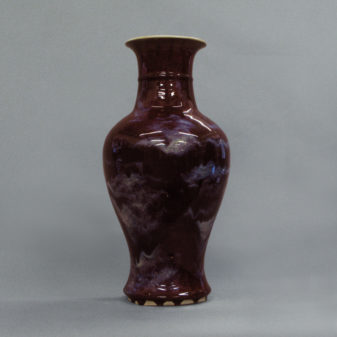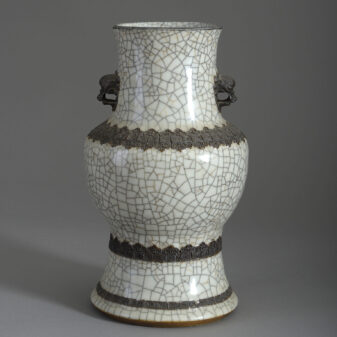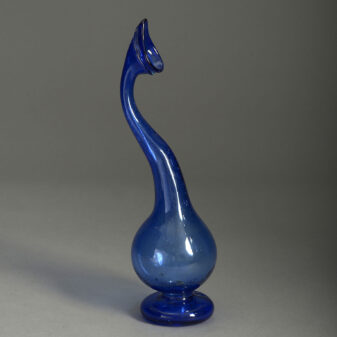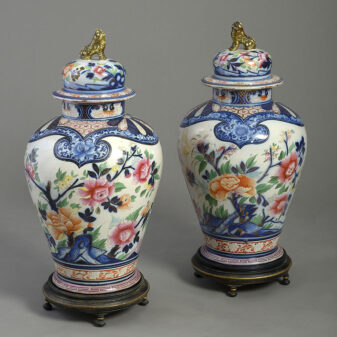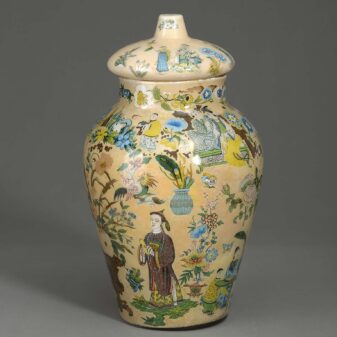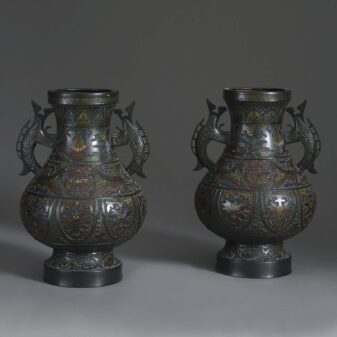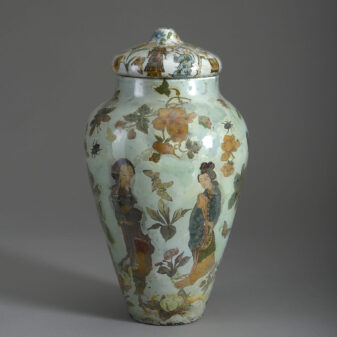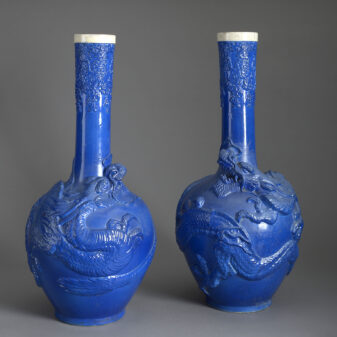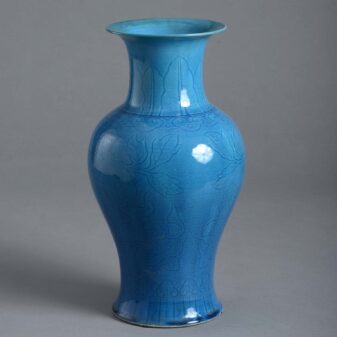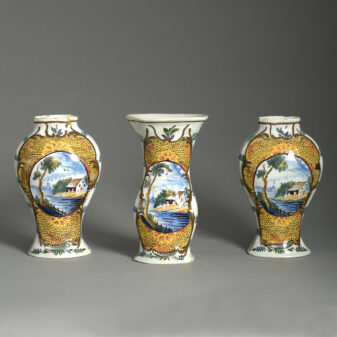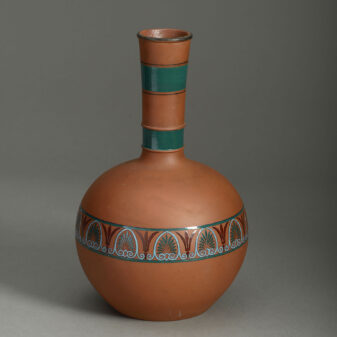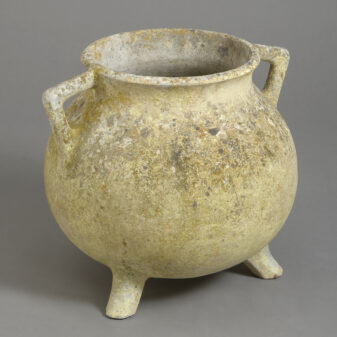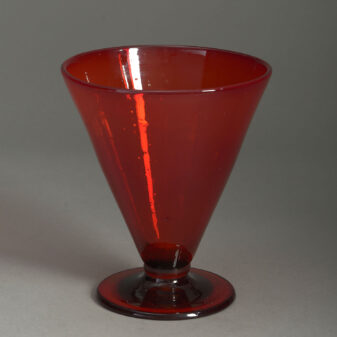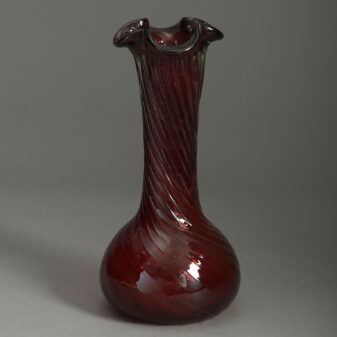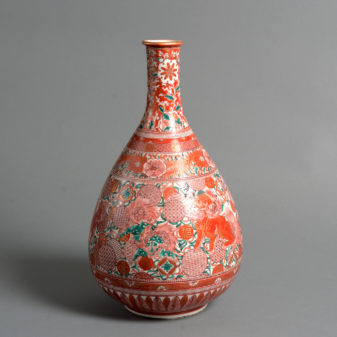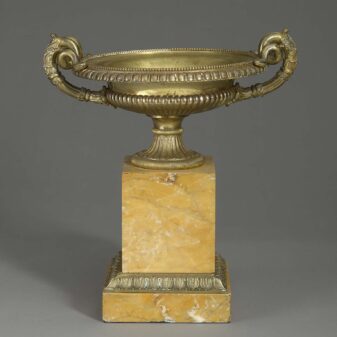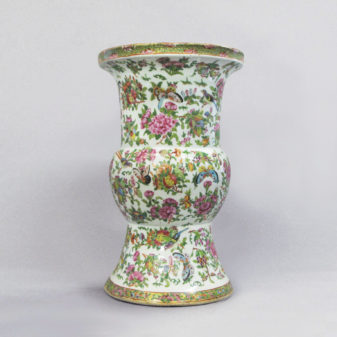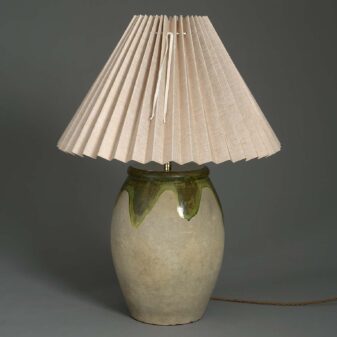A 19th Century Moorish Couscous Pot and Cover
£380
SOLD
A late 19th century blue and white glazed couscous pot and cover with geometric decoration throughout
Antique Hispano-Moresque pottery, was first produced in Southern Spain when it was occupied by the Moors. From the thirteenth century onwards, lustre ware was made using the techniques employed by Islamic potters in Iraq, Persia, Syria and Morocco.
Antique Hispano-Moresque pottery uses a tin, a copper oxide (occasionally in the earlier pieces used in conjunction with silver oxide) and sometimes cobalt blue. Initially the centres of production were Malaga, Almeria, Murcia and Granada. After the Christian re-conquest of southern Spain, Valencia became the main centre for the production of antique Hispano-Moresque pottery.
The effects were various, from a pale yellow iridescence in early pieces, to a copperish iridescence in late work. Early designs are typical Islamic: palm motifs, the tree of life and Arabic inscriptions. Later designs became a combination of Islamic and Italian Renaissance motifs. The Arabic inscriptions indicate that, in the 15th century, the work was taken over by Christian craftsmen. The imitation of this type of pottery, in Italy, led to the development of Italian maiolica ware.


